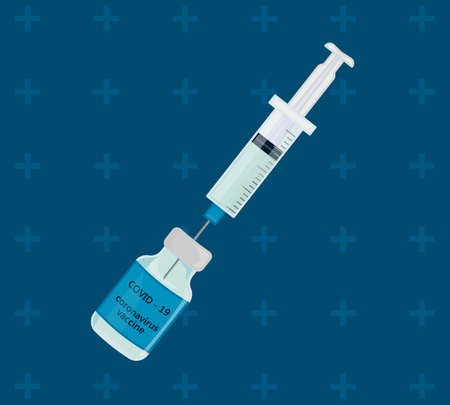Understanding Microneedling and Dermarolling
When it comes to revitalising your complexion, microneedling and dermarolling stand out as two of the most sought-after treatments across the UK. While both are designed to stimulate skin renewal, they differ notably in their approach and the tools involved. Microneedling is typically performed by a skincare professional using a specialised device with fine, sterile needles. These needles create tiny, controlled punctures in the skin’s surface, encouraging natural collagen production and enhancing overall skin texture. On the other hand, dermarolling is often done at home with a handheld roller covered in micro-needles. The process is similar in principle but less intensive and generally considered milder than clinical microneedling. The main distinction lies in the depth and precision of the treatment: microneedling devices can be adjusted for needle length and offer greater accuracy, making them more suitable for targeting specific concerns. Dermarollers usually have fixed needle lengths and are ideal for those seeking gentle maintenance or an introduction to this type of skincare. Understanding these fundamental differences is key when deciding which method aligns best with your unique needs and expectations.
Benefits and Effectiveness
When it comes to tackling common skin concerns, both microneedling and dermarolling have earned their place in the skincare spotlight. However, understanding which approach suits your unique needs can make all the difference in achieving radiant, healthy-looking skin. Let’s explore how each method addresses specific issues like acne scars, fine lines, and pigmentation, and help you determine which might be your best option.
Targeting Key Skin Concerns
| Skin Concern | Microneedling | Dermarolling |
|---|---|---|
| Acne Scars | Highly effective for moderate to severe scarring; professional devices penetrate deeper, promoting significant collagen production. | Best for mild scarring; at-home rollers offer superficial results but are less effective on deep or pitted scars. |
| Fine Lines & Wrinkles | Excellent for smoothing wrinkles and softening lines; clinical treatment stimulates profound skin renewal over several sessions. | Suitable for early signs of ageing; noticeable improvement with consistent use, though results may take longer to appear. |
| Pigmentation | Effective for reducing hyperpigmentation and evening out skin tone, especially when combined with targeted serums post-treatment. | Can help fade light pigmentation issues but is less powerful than microneedling for stubborn discolouration. |
Which Treatment Excels for Different Needs?
If your main concern is deep acne scarring or pronounced fine lines, microneedling—especially when performed by a trained professional—typically offers more dramatic improvements due to its ability to reach deeper layers of the skin. On the other hand, dermarolling is a practical choice for those who wish to maintain their skin’s health at home and address mild imperfections or early signs of ageing. It’s also a gentler introduction to needling treatments if you’re new to this approach.
The Takeaway
If you’re after transformative results and are prepared for a series of clinic visits, microneedling may be your best bet. For ongoing maintenance and gentle enhancement from the comfort of your own home, dermarolling provides a flexible alternative. Ultimately, the right choice will depend on your personal goals, budget, and comfort level—so consider what matters most to you as you embark on your journey towards healthier, brighter skin.

3. Safety and Side Effects
When weighing up microneedling versus dermarolling, it’s crucial to consider the safety and potential side effects of each treatment—especially with the unique needs of British skin and climate in mind. Both procedures involve creating controlled micro-injuries to the skin, which can promote collagen production but also carry some risks. Microneedling, typically performed by trained professionals using medical-grade devices, tends to offer a higher level of safety due to precise needle depth control and sterile environments. In contrast, at-home dermarollers can be more variable in quality and cleanliness, increasing the chance of infection or improper technique.
Common side effects for both treatments include redness, mild swelling, and a sensation similar to sunburn, usually resolving within a few days. However, individuals with sensitive or fair British skin may experience more pronounced erythema (redness) or temporary hyperpigmentation, especially if aftercare instructions aren’t strictly followed. The cooler, often damp UK climate might actually aid recovery by reducing post-procedure inflammation, but it is essential to protect healing skin from unexpected sun exposure—even on overcast days.
For those with underlying skin conditions such as eczema or rosacea (which are not uncommon in the UK), caution is paramount. It’s wise to seek professional advice before proceeding with either treatment. Additionally, ensuring all tools are properly sanitised is non-negotiable to avoid bacterial infections—a risk that can be higher with at-home dermarolling kits.
Ultimately, while both options can be safe when used correctly and under the right circumstances, microneedling performed in a clinical setting offers peace of mind for those who prioritise safety and want reassurance tailored to their individual skin type and local environment. Always consult with a qualified practitioner to determine which approach suits your skin best.
4. At-Home vs. Professional Treatment
If you’re weighing up your options between at-home dermarolling and professional microneedling in the UK, it’s vital to understand how they differ in terms of results, convenience, and regulation. Both approaches can offer improvements to your skin, but their effectiveness, safety, and overall experience vary considerably.
Comparing At-Home Dermarolling and Professional Microneedling
| Aspect | At-Home Dermarolling | Professional Microneedling (UK Clinics) |
|---|---|---|
| Results | Mild improvements for minor concerns like dullness or fine lines; requires consistency over time. | More noticeable results for deeper issues such as acne scars, pigmentation, and wrinkles after fewer sessions. |
| Convenience | Can be done anytime at home; fits easily into a busy lifestyle. | Requires clinic appointments; may need some downtime post-treatment depending on intensity. |
| Regulation & Safety | No formal regulation on devices or technique; risk of improper use, contamination, or injury if not careful. | Treatments are regulated under UK law; performed by trained professionals using sterile equipment and tailored protocols. |
| Cost | Initial investment in device is generally lower; ongoing costs minimal. | Higher per session, but often more effective in fewer treatments—may be more cost-effective long-term for significant concerns. |
The Importance of Regulation and Professional Expertise
It’s worth noting that UK clinics offering microneedling are subject to strict health and safety standards. This means your treatment is not only safer but also more likely to deliver optimal results tailored to your unique skin type. By contrast, at-home dermarolling tools are largely unregulated, so you’ll need to take extra care with hygiene and technique to avoid potential setbacks like irritation or infection.
Your Decision: What Matters Most?
If you’re seeking gentle maintenance or want to dip your toe into skin rejuvenation without a hefty price tag, at-home dermarolling could suit you. However, for those with more pronounced concerns—or if peace of mind is high on your list—professional microneedling at a reputable UK clinic provides both reassurance and visible transformation. Whichever path you choose, always prioritise safety and realistic expectations for the healthiest possible glow.
5. Aftercare and Recovery Tips
Looking after your skin post-microneedling or dermarolling is absolutely crucial, especially given the unpredictable British weather and the common sensitivities found in UK skin types. Once your treatment is complete, it’s essential to adopt a gentle approach—think of it as giving your complexion a cosy cuppa after a long day.
Immediate Aftercare Essentials
First and foremost, avoid touching your face unnecessarily to prevent introducing bacteria. Skip makeup for at least 24 hours, and resist the temptation to use fragranced products, as these can irritate newly treated skin. Opt instead for a fragrance-free, hydrating moisturiser that supports the skin barrier—a must in our often brisk and blustery climate.
Managing Redness and Sensitivity
A little redness and mild swelling are completely normal, particularly with microneedling. Calm things down with cool (not cold) compresses or a gentle spritz of thermal water. If your skin feels a bit tight or tingly, don’t worry; this usually settles within a day or two.
Protection Against the Elements
The UK’s changeable weather can pose extra challenges. Even on cloudy days, apply a broad-spectrum SPF 30 or higher to protect sensitive skin from UV damage—yes, even when the sun’s playing hide-and-seek behind the clouds! If you’re facing wind or rain, consider a barrier cream to shield your skin from environmental stressors.
Long-term Recovery Advice
For the week following treatment, continue to avoid harsh exfoliants, retinols, and strong acids. Instead, focus on nourishing serums with hyaluronic acid or peptides to encourage healing. Keep up hydration by drinking plenty of water—a little habit that does wonders year-round in Britain’s frequently dry indoor environments.
Finally, listen to your skin. If you notice any prolonged irritation or signs of infection, reach out to your practitioner promptly. With these thoughtful aftercare steps tailored to UK conditions, you’ll be well on your way to enjoying smoother, healthier-looking skin with confidence and comfort.
6. Making the Right Choice for Your Skin
Choosing between microneedling and dermarolling is a deeply personal decision, shaped by your unique skin concerns, lifestyle, and the results you hope to achieve. Both treatments offer impressive benefits, but understanding which aligns best with your needs is key to building confidence in your skincare journey. Microneedling, often performed by professionals, can deliver targeted, transformative results for those seeking improvement in scarring, pigmentation, or deeper wrinkles. Dermarolling, on the other hand, provides a more accessible route for individuals wishing to maintain their skin at home and address milder issues like texture and radiance.
Empowering Your Decision-Making
No two complexions are alike—what works wonders for one person may not suit another. Take time to reflect on your comfort level with in-clinic procedures versus at-home routines. Consider your daily commitments: do you have time for professional appointments, or does an at-home solution fit more seamlessly into your lifestyle? Factor in your expectations too; if you desire subtle enhancement and gradual change, dermarolling might be ideal. For those seeking visible transformation under expert guidance, microneedling could be the answer.
The Importance of Professional Advice
While self-education is empowering, consulting a trusted UK skincare professional remains invaluable. A qualified practitioner will assess your skin type, listen to your concerns, and recommend a tailored treatment plan based on clinical expertise and British safety standards. Don’t hesitate to ask questions or voice any worries—it’s all part of taking charge of your skin health with confidence.
Your Journey Towards Healthier Skin
Ultimately, the best choice is the one that makes you feel comfortable, supported, and empowered. Whether you opt for professional microneedling or prefer the convenience of dermarolling at home, remember that investing in your skin is an act of self-care. Trust yourself to make informed decisions, seek guidance when needed, and celebrate each step towards healthier, more radiant skin.

